Kentucky is home to some of the most spectacular underground wonders in America, including the world-famous Mammoth Cave system. Thousands of visitors explore these ancient formations every year, eager to witness the beauty carved by nature over millions of years.
However, what many tourists don’t realize is that a simple touch of the cave walls can result in serious fines and permanent damage to these irreplaceable treasures. Oils from human skin can disrupt delicate ecosystems and accelerate the decay of centuries-old formations.
Park rangers take these violations seriously, and enforcement is strict to ensure the caves remain pristine for future generations.
1. Federal Penalties Can Reach Thousands of Dollars
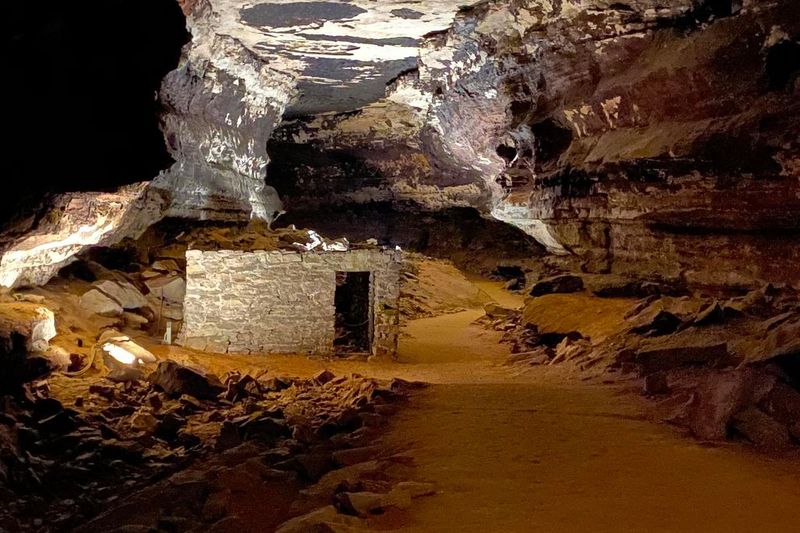
Mammoth Cave National Park operates under federal protection, which means breaking the rules comes with hefty consequences.
Rangers have the authority to issue citations that can cost violators anywhere from several hundred to several thousand dollars depending on the severity of the damage. Park officials take these violations seriously because even minor infractions can compromise decades of preservation efforts.
The exact fine amount varies based on whether it’s a first offense and how much damage occurred. Some tourists have reported fines exceeding $5,000 for deliberately marking or damaging cave formations. These penalties aren’t just about punishment but serve as a deterrent to protect these fragile ecosystems for future generations.
Visitors should remember that ignorance of the law doesn’t excuse violations. Signs are posted throughout the cave system warning against touching walls and formations. Park rangers also provide clear instructions during guided tours, making it nearly impossible to claim you didn’t know the rules.
2. Oil From Human Hands Stops Cave Growth Forever
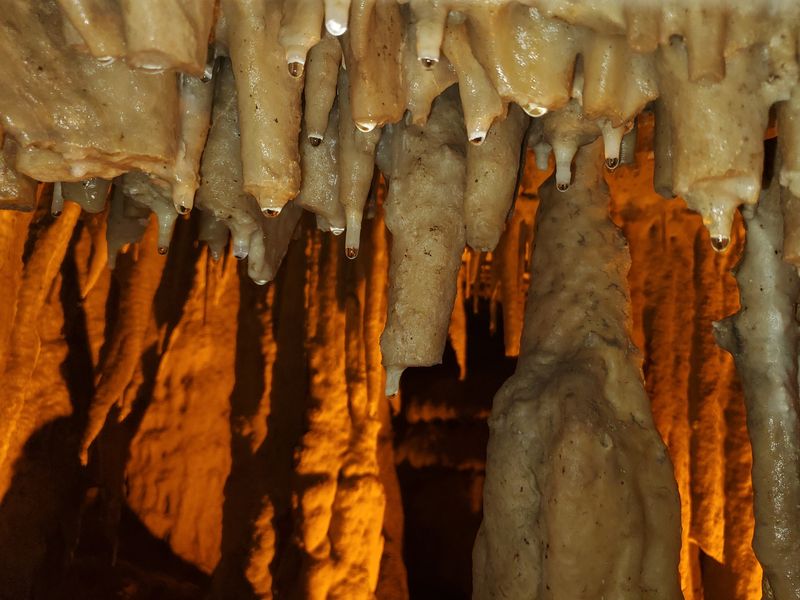
Your fingertips carry natural oils that might seem harmless on everyday surfaces but prove devastating to cave formations.
When you press your hand against a stalactite or flowstone, those oils create an invisible barrier that prevents water from depositing new minerals. Cave formations grow incredibly slowly, sometimes just a cubic inch every hundred years, making any interruption permanent within human lifetimes.
Scientists have documented areas where a single handprint stopped growth that had continued uninterrupted for thousands of years. The oils essentially seal the rock surface, blocking the chemical processes that allow formations to develop. What took nature millennia to create can be ruined in seconds by casual contact.
Park geologists use special lighting to reveal the extent of oil contamination on cave surfaces. Some popular areas show countless handprints glowing under ultraviolet light, representing permanent scars on these natural wonders.
Keeping your hands to yourself ensures these spectacular formations can continue their slow but magnificent growth.
3. Rangers Monitor Caves With Hidden Surveillance Technology
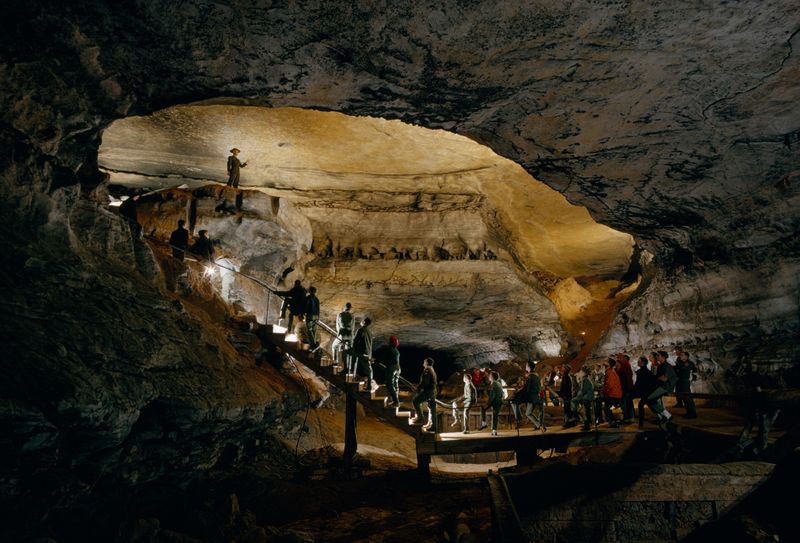
Modern technology helps park officials protect cave systems even when rangers aren’t physically present. Motion-activated cameras and sensors are strategically placed throughout Mammoth Cave and other protected Kentucky cave systems.
These devices capture evidence of rule violations, making it easier to identify and penalize those who touch or damage formations.
Many visitors assume they can get away with quick touches in dimly lit areas or when tour groups move ahead. However, surveillance footage has led to numerous citations and even criminal charges for serious violations. The technology doesn’t just catch people in the act but also helps rangers identify patterns of damage and vulnerable areas needing extra protection.
Some cave systems also employ special coatings that reveal handprints under specific lighting conditions. Rangers conduct regular inspections using these detection methods. If you think nobody will notice a quick touch, think again because the evidence often remains visible for investigators long after you’ve left the cave.
4. State Laws Add Additional Penalties Beyond Federal Fines

Kentucky state law provides its own layer of protection for cave systems beyond what federal regulations cover. Violators may face dual prosecution under both state and federal statutes, potentially doubling the financial consequences and legal troubles.
State penalties can include mandatory community service, educational programs about cave conservation, and even jail time for repeat offenders or cases involving significant vandalism.
The Kentucky Revised Statutes specifically address cave protection and archaeological site preservation. These laws recognize caves as irreplaceable natural resources deserving special safeguards. Local prosecutors have shown willingness to pursue charges vigorously, especially when damage occurs to rare formations or sensitive archaeological areas.
Combined state and federal penalties create a powerful deterrent system. Someone caught deliberately damaging cave formations could face fines totaling tens of thousands of dollars plus criminal records.
Courts rarely show leniency because the damage cannot be undone, and judges want to send clear messages that such behavior won’t be tolerated in Kentucky’s treasured underground spaces.
5. Bacteria From Hands Creates Permanent Discoloration
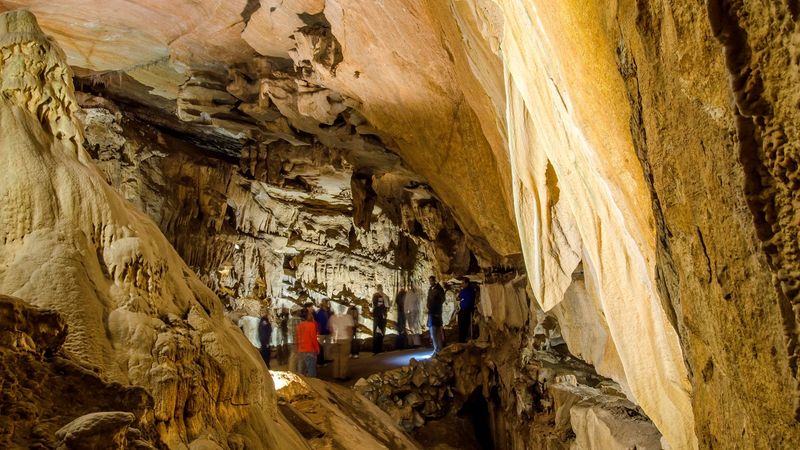
Beyond oils, human skin hosts countless bacteria that transfer to cave surfaces with every touch. These microorganisms thrive in the constant temperature and humidity of cave environments, creating colonies that appear as dark stains or discolored patches on once-pristine formations.
Unlike surface stains that might wash away, bacterial growth penetrates porous rock and becomes a permanent feature.
Microbiologists studying Kentucky caves have identified dozens of bacterial species introduced solely through human contact. Some of these organisms alter the chemical composition of formations, causing structural weakening in addition to visual damage.
Popular tourist caves show the most severe bacterial contamination, with some formations appearing significantly darker than when first discovered.
The problem compounds over time as bacterial colonies expand and attract other microorganisms. What begins as a single handprint can eventually spread across entire sections of cave wall.
Cleaning these biological invasions risks damaging the formations further, so prevention through strict no-touch policies remains the only practical solution for protecting Kentucky’s underground treasures.
6. Children Face Same Penalties Despite Age
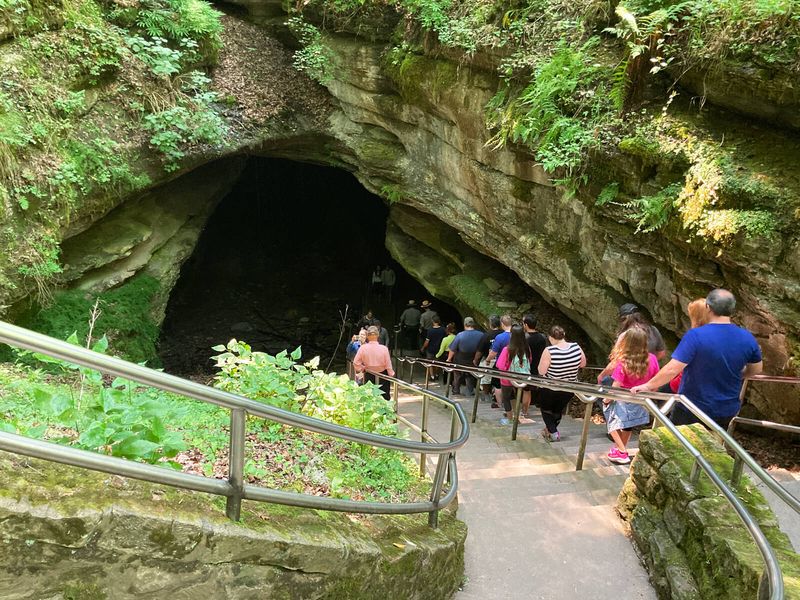
Parents sometimes assume their children won’t face serious consequences for touching cave walls, but Kentucky cave protection laws make no exceptions based on age.
While very young children might receive warnings rather than citations, older kids and teenagers can absolutely receive fines identical to those issued to adults. Legal guardians become financially responsible for penalties assessed to minors, making family cave visits potentially expensive if rules aren’t followed.
Park rangers emphasize that teaching children proper cave etiquette protects both the formations and family budgets. Kids naturally want to touch interesting textures and formations, making parental supervision crucial during cave tours. Many families have learned this lesson the hard way after receiving unexpected bills for hundreds or thousands of dollars.
Educational programs at Kentucky caves specifically target young visitors, explaining why touching damages formations. Rangers use engaging demonstrations showing how oils and bacteria affect rock surfaces.
These programs help children understand they’re not being punished arbitrarily but protecting something precious. Families who prepare kids before visiting generally have wonderful experiences without incident or financial stress.
7. Insurance Won’t Cover Cave Damage Fines

Travelers hoping their insurance policies might cover cave violation penalties will find themselves disappointed.
Standard travel insurance, homeowner’s policies, and liability coverage specifically exclude fines and penalties resulting from illegal activities or willful misconduct. Since touching cave walls violates clearly posted rules, insurance companies classify violations as intentional acts not covered under typical policies.
Some visitors have attempted to dispute fines by claiming accidental contact, but proving true accidents versus negligence or deliberate touching proves difficult. Insurance adjusters routinely deny these claims, leaving violators personally responsible for full payment. The financial impact can derail vacation budgets and create lasting financial stress.
Legal fees for contesting citations add another expensive layer most insurance won’t cover. Lawyers familiar with federal and state cave protection laws don’t come cheap, and success rates for overturning legitimate violations remain extremely low.
The smartest financial decision involves simply keeping your hands off cave surfaces, ensuring your trip memories remain positive rather than expensive and regretful. Prevention costs nothing while violations can cost thousands.
8. Social Media Posts Have Led to Retroactive Fines
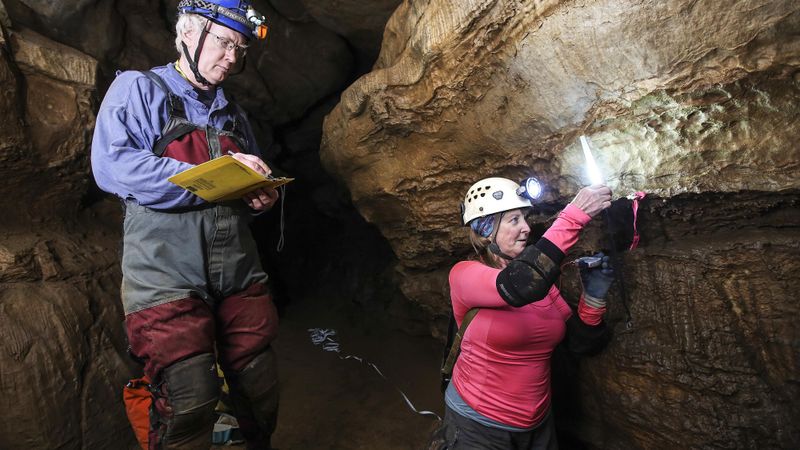
Posting cave visit photos on social media seems innocent enough until those images provide evidence of rule violations. Park officials actively monitor platforms like Instagram, Facebook, and TikTok for posts showing people touching formations or engaging in prohibited behaviors.
Several tourists have received citations weeks or months after their visits based solely on photographic evidence they voluntarily shared online.
Geotagging features make identifying specific cave locations easy for investigators. Even without location data, rangers familiar with their cave systems can recognize distinctive formations appearing in background shots. What starts as vacation bragging rights can quickly transform into legal nightmares and unexpected bills.
Some visitors have faced additional charges for encouraging others to break rules through their posts. Influencers and bloggers who document violations for content creation face particularly harsh scrutiny and penalties.
Park officials view these posts as especially damaging because they normalize destructive behavior and potentially inspire copycat actions. Before posting cave photos, carefully review them for any evidence of rule-breaking that could come back to haunt you financially and legally.
9. Repeat Offenders Face Criminal Charges and Jail Time

First-time violators typically receive fines and stern warnings, but those caught multiple times face escalating consequences including criminal prosecution.
Federal courts can charge repeat offenders with misdemeanors or even felonies depending on the damage caused and violation history. Criminal records resulting from cave protection violations can affect employment, travel, and other aspects of life far beyond the initial incident.
Judges show little sympathy for repeat offenders because continued violations demonstrate willful disregard for preservation efforts and public resources. Sentences can include substantial jail time, particularly when damage involves rare or scientifically significant formations.
Some offenders have received sentences exceeding six months in federal prison for serious or repeated cave vandalism.
Kentucky courts maintain databases tracking cave-related violations, making it impossible for repeat offenders to claim ignorance or first-time mistakes. The legal system treats these cases seriously because cave formations represent irreplaceable natural heritage.
Anyone considering ignoring rules should understand that consequences intensify dramatically with each violation, potentially leading to life-altering criminal convictions and incarceration rather than simple fines.
10. Cave Restoration Costs Get Added to Your Fine
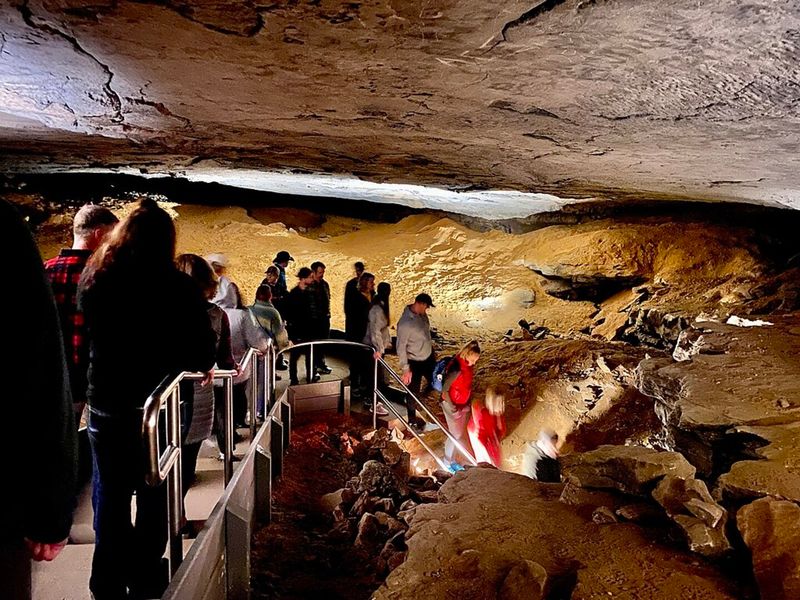
When touching causes visible damage to formations, violators may face additional charges covering attempted restoration costs. Professional cave restoration requires specialized expertise and equipment, with expenses easily reaching tens of thousands of dollars for significant damage.
Courts can order offenders to pay these costs on top of standard fines, creating financial obligations that follow violators for years.
Restoration specialists use delicate techniques trying to remove oils, bacteria, and other contaminants without causing further harm. Success rates vary, and some damage simply cannot be reversed regardless of effort or expense.
Even when restoration proves impossible, courts may still assess costs for the attempt, reasoning that violators should bear financial responsibility for harm they caused.
Collection agencies pursue unpaid fines and restoration costs aggressively, potentially affecting credit scores and financial stability. Some offenders have faced wage garnishment and asset liens when they failed to pay court-ordered restitution.
The financial shadow of a single thoughtless touch can follow someone for decades. Respecting posted rules protects both irreplaceable natural wonders and your personal financial future from devastating consequences.
Dear Reader: This page may contain affiliate links which may earn a commission if you click through and make a purchase. Our independent journalism is not influenced by any advertiser or commercial initiative unless it is clearly marked as sponsored content. As travel products change, please be sure to reconfirm all details and stay up to date with current events to ensure a safe and successful trip.